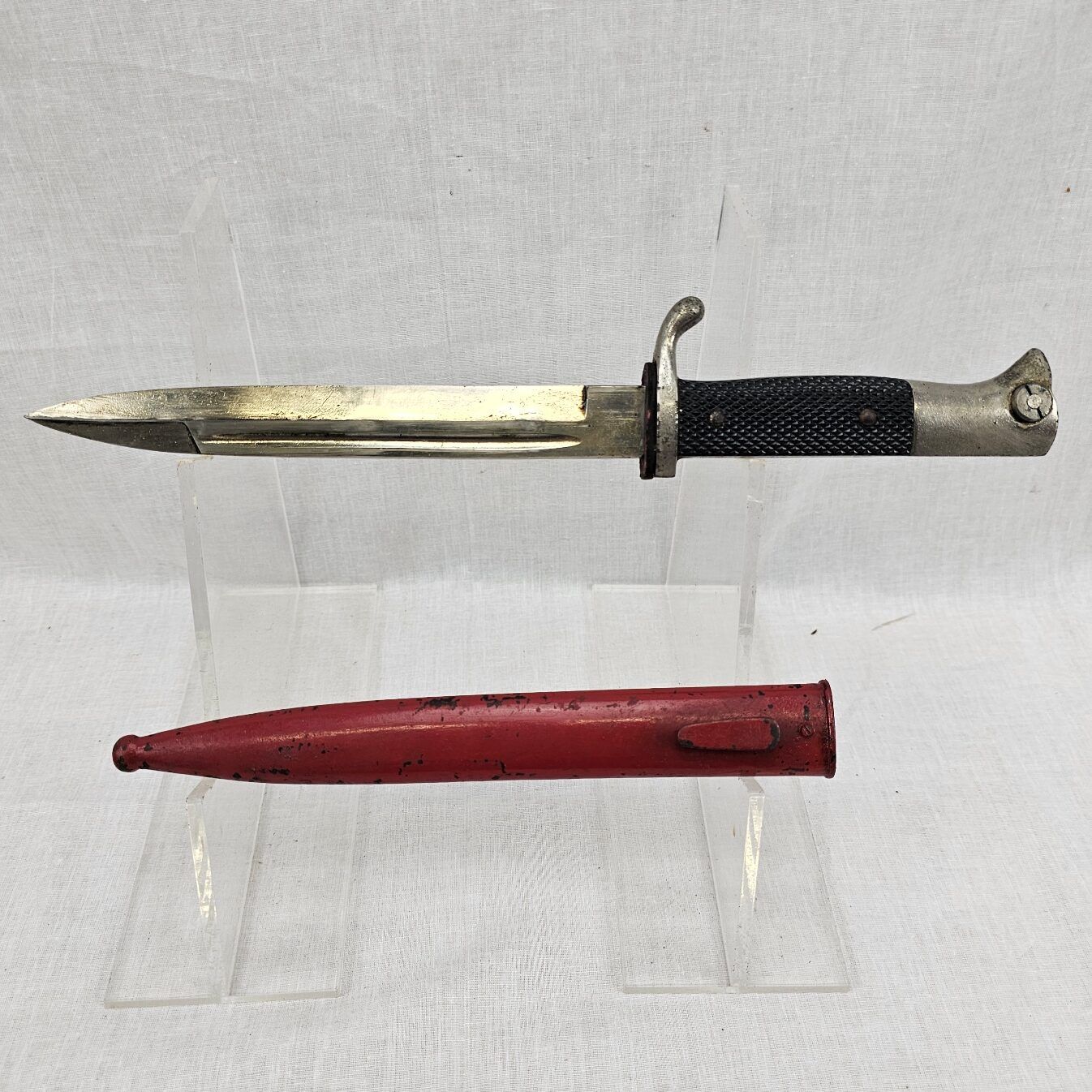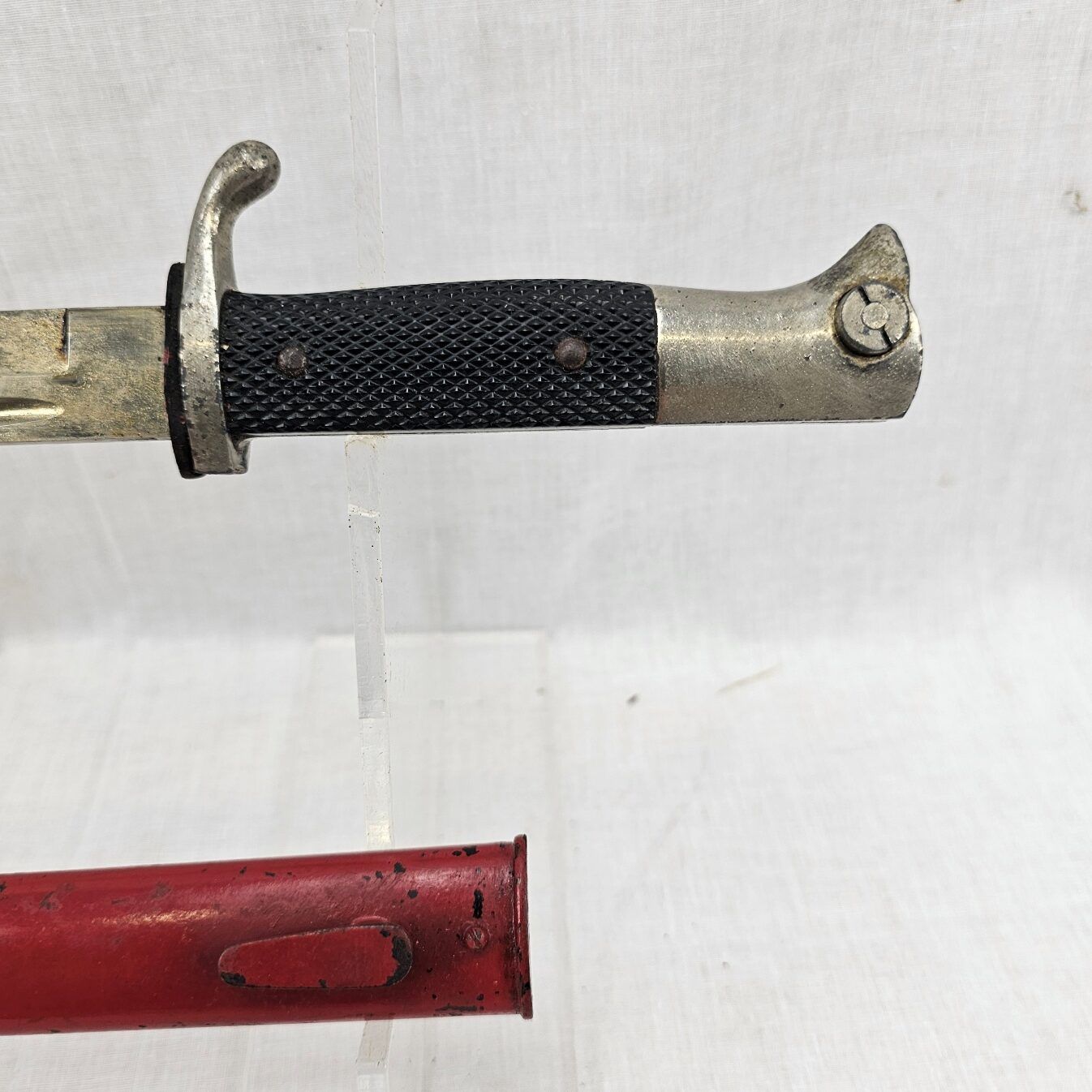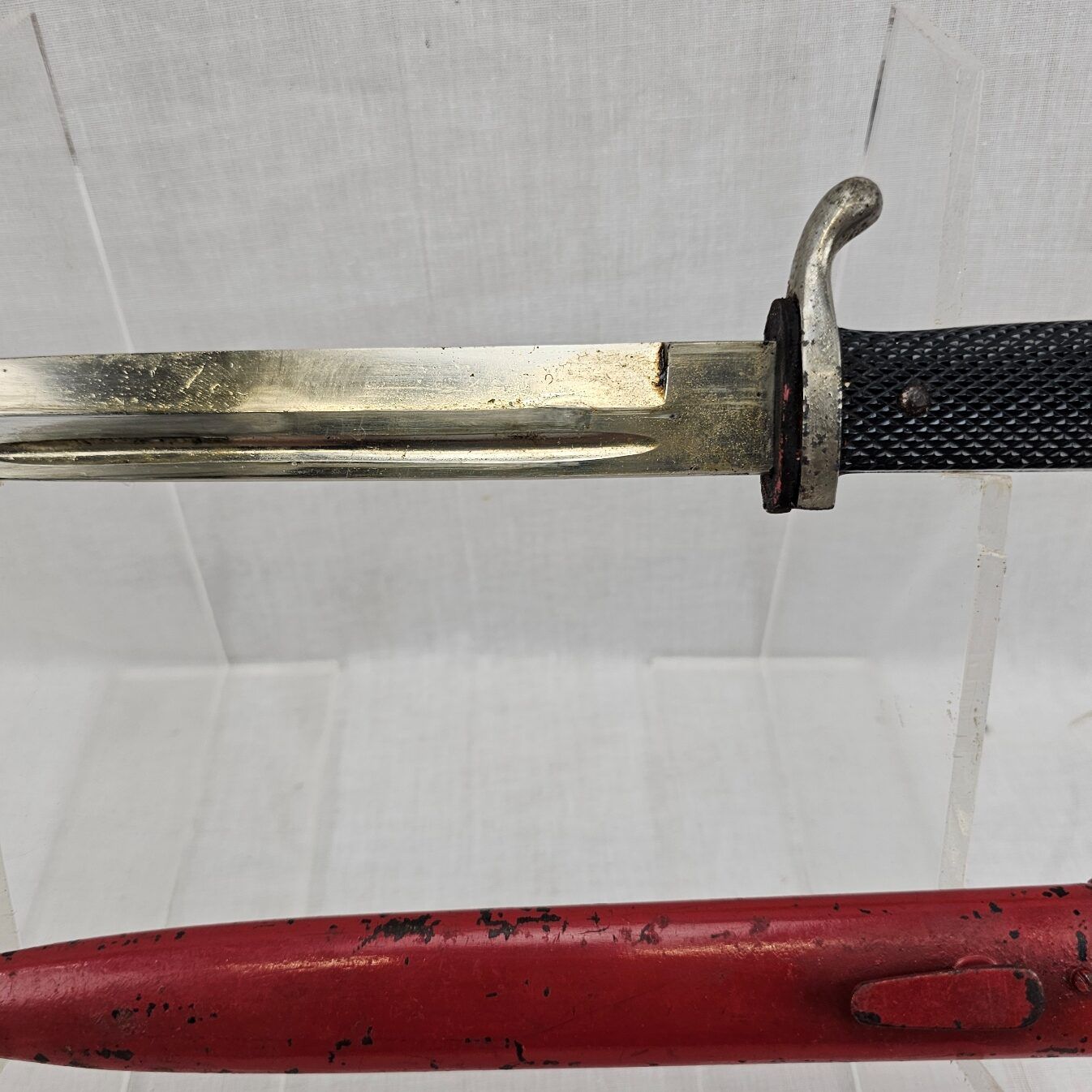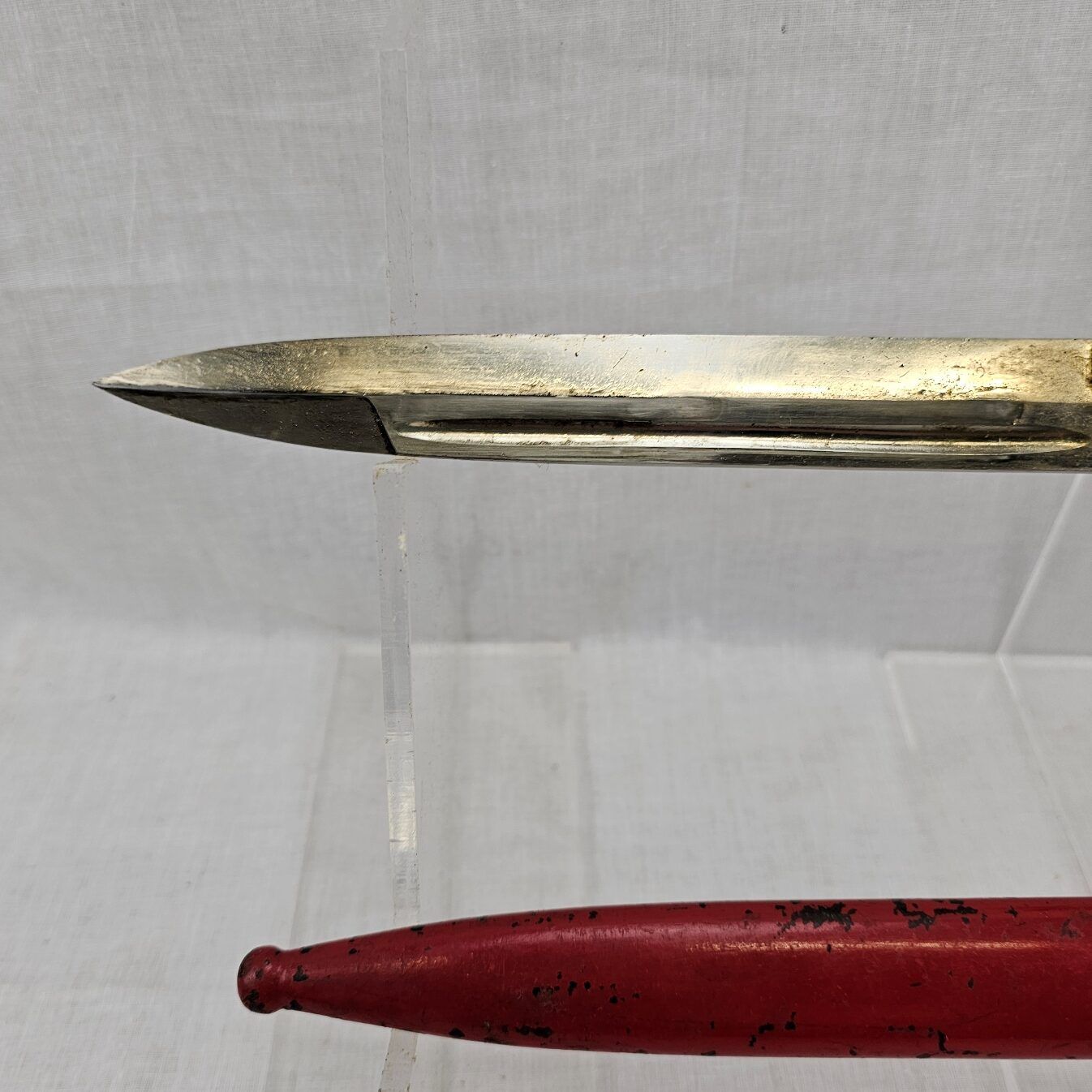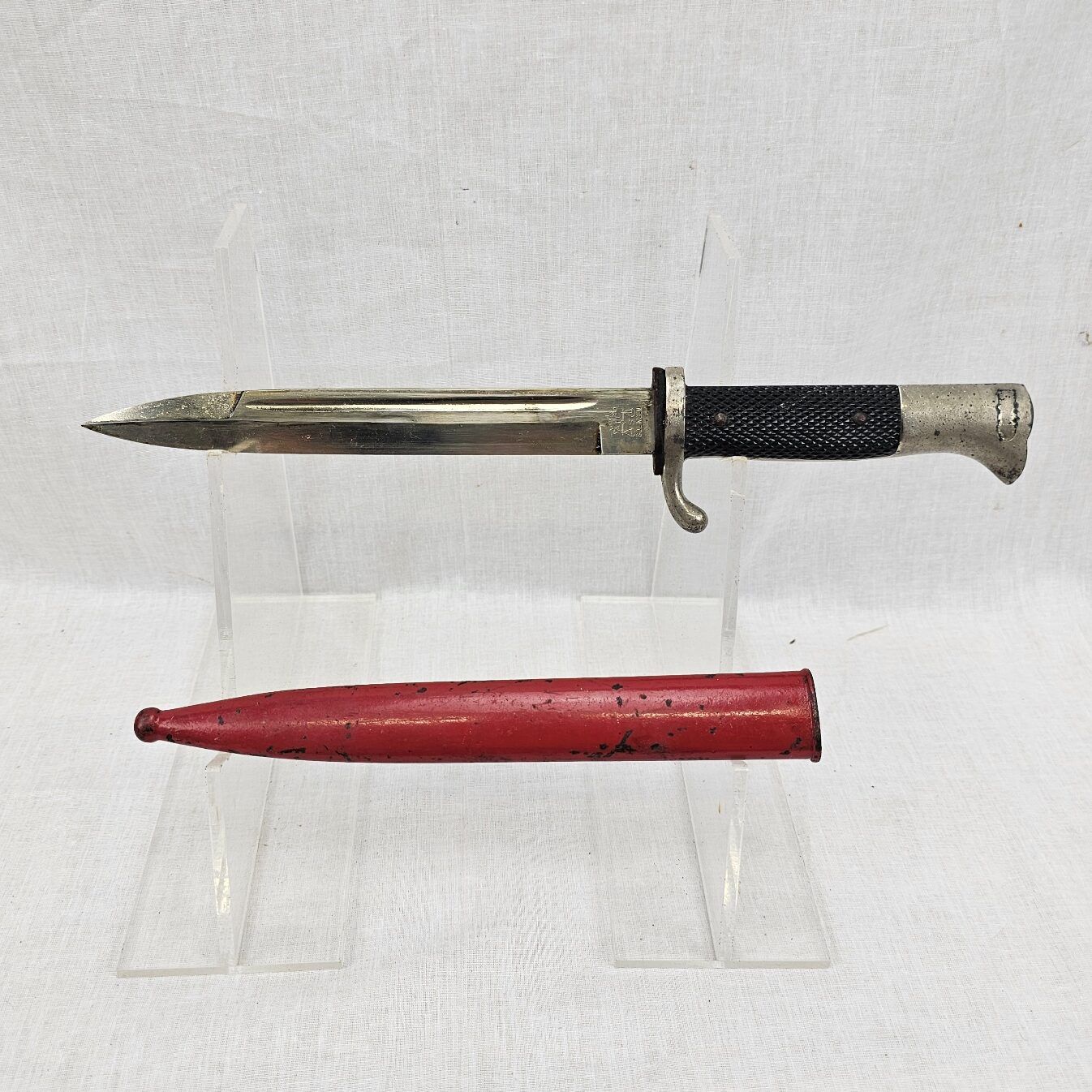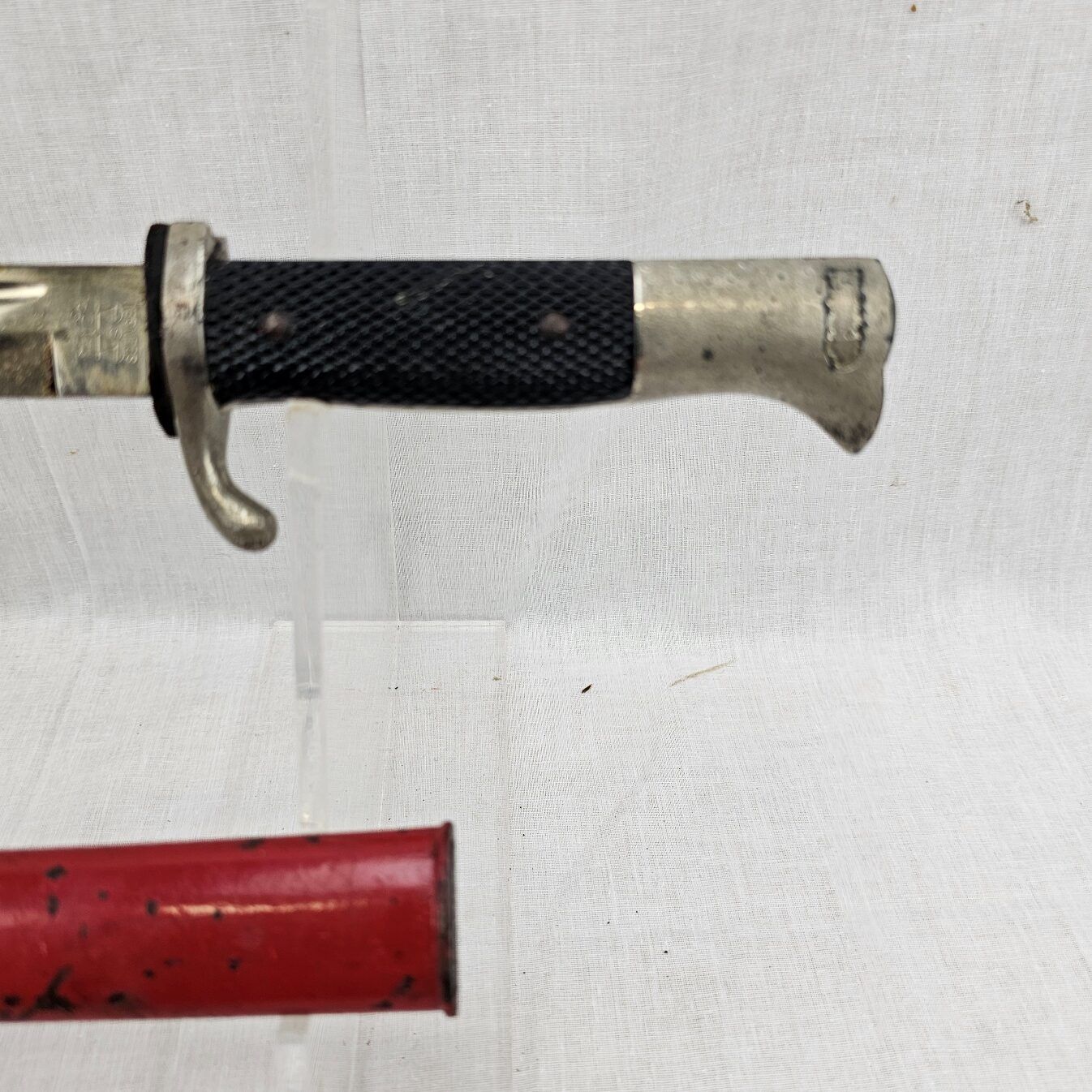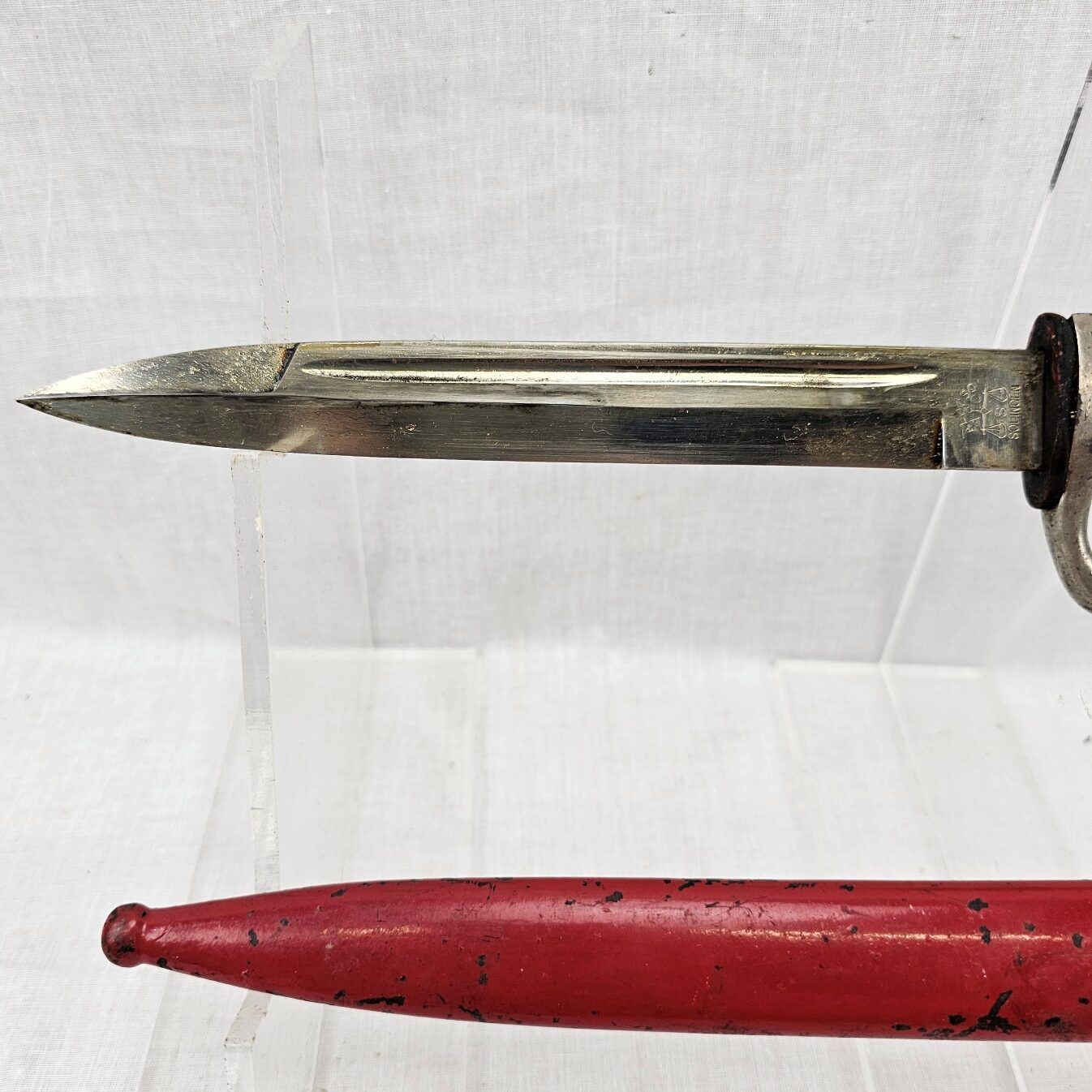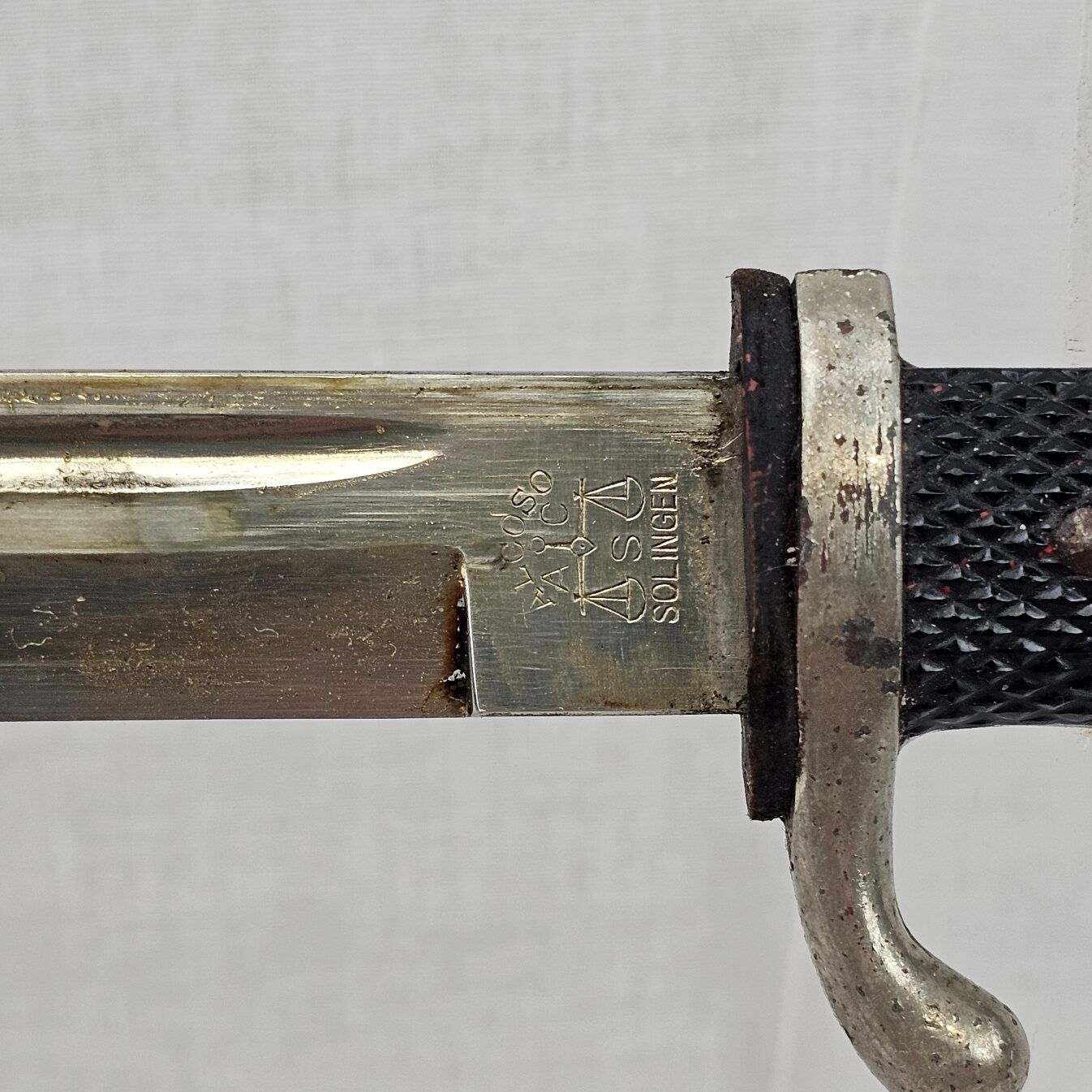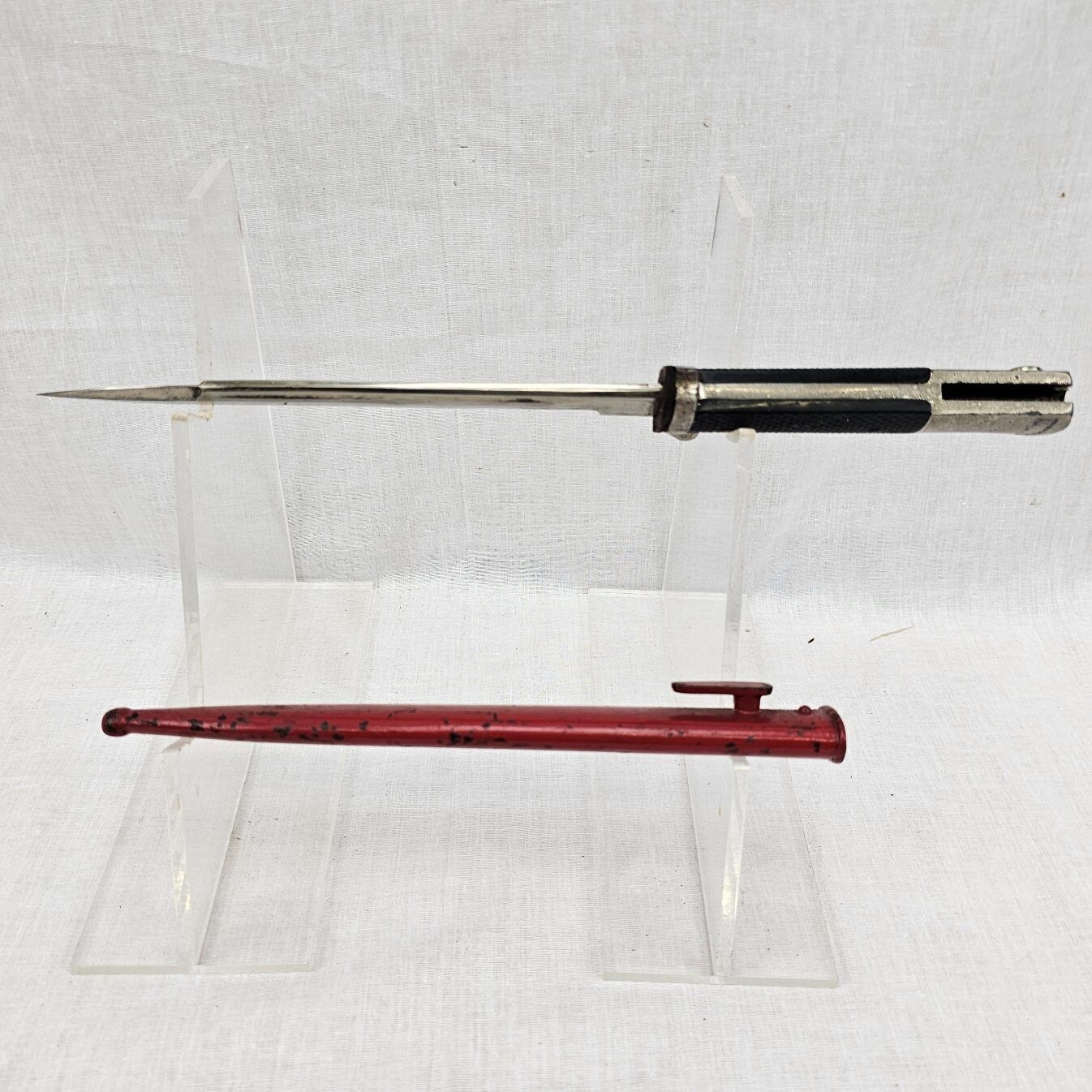~ WW2 Era Nazi Germany Parade Short Bayonet & Scabbard ~
The WW2 Era Nazi Germany Parade Short Bayonet & Scabbard is a ceremonial weapon used primarily by soldiers and officers of Nazi Germany during parades, formal occasions, and inspections. These bayonets were not designed for combat use but instead were intended to complement the formal dress uniforms of the era, particularly for units such as the Wehrmacht, Luftwaffe, and SS. These bayonets became a symbol of military prestige and were often highly decorated.
The ricasso bears the makers mark ALCOSO Solingen.
Description of the Parade Short Bayonet:
Blade:
The blade of a parade bayonet is typically shorter than a standard combat bayonet, usually measuring around 8-10 inches.
The blade is single-edged, often with a straight, narrow design and sometimes a sharpened false edge near the tip.
The blade is usually made from high-grade steel and polished to a bright finish, unlike the more utilitarian combat bayonets. The surface of the blade is highly reflective.
Many examples have etchings or engravings on the blade, such as the maker’s logo or more decorative designs that are typical of the ceremonial style.
Handle:
The handle of the parade bayonet was often made of black Bakelite or plastic, designed to mimic wood. It was molded for a comfortable grip.
Some handles had decorative inlays or the Nazi eagle and swastika emblem, reflecting the political symbols of the time.
The pommel often featured a stylized eagle’s head or an otherwise decorative design, which distinguished these bayonets from the more functional military models.
The crossguard was usually made of nickel-plated steel, forming a protective barrier between the hand and the blade. The crossguard might also be adorned with decorative elements.
Scabbard:
The scabbard was typically made from steel, painted in black or other colors, with a high-gloss or lacquered finish. This was designed for formal appearances, making the bayonet and scabbard look pristine during parades.
Many scabbards had a frog attachment for mounting the bayonet onto a uniform belt.
Some scabbards also featured metal fittings at the top and bottom, which could be nickel-plated or brass, adding to the ceremonial appearance of the weapon.
Mounting and Functionality:
Although these parade bayonets could theoretically be mounted onto rifles (such as the Karabiner 98k), they were not intended for use in battle. The locking mechanism for attaching the bayonet to a rifle was often functional but decorative.
Unlike combat bayonets, the blade was often unsharpened, designed purely for appearance rather than fighting.
Historical Context:
The parade short bayonet was part of the formal uniform of Wehrmacht soldiers, SS members, and Luftwaffe personnel, particularly for non-commissioned officers (NCOs).
These bayonets were introduced as part of the broader tradition of wearing ceremonial weapons during parades and official events, which had been common in military organizations worldwide.
The design of the Nazi-era parade bayonets drew from earlier German military traditions but incorporated the political symbols of the Third Reich, such as the eagle and swastika motif.
Parade bayonets were made by a variety of German manufacturers, including well-known firms like E. & F. Hörster, Carl Eickhorn, and Alcoso, all of which were prominent producers of military blades during the era.
Manufacturers:
Some of the most common manufacturers of Nazi-era parade bayonets were based in Solingen, Germany, which was renowned for its blade-making industry.
Popular manufacturers include:
E. & F. Hörster
Carl Eickhorn
Alcoso (Alex Coppel & Sohn)
These companies produced thousands of ceremonial bayonets, and their logos are often found stamped on the blade near the hilt.
Variants:
Short Parade Bayonet: Typically the most common version, with a blade around 8-10 inches long. These were used by many different branches of the military and were the standard ceremonial sidearm.
Long Parade Bayonet: A longer version (sometimes up to 12 inches in length) was also made, though it was less common.
Dress Bayonets for Specific Units: Certain bayonets were customized with engravings, unit insignias, or personal markings, especially for officers or NCOs of higher ranks.
Cultural and Historical Significance:
These bayonets, while not functional weapons, served as symbols of military power and discipline during parades and formal events. They were an important part of the visual propaganda of Nazi Germany, representing both the military and ideological aspects of the regime.
The use of these bayonets, adorned with Nazi symbols, reflected the close alignment between the German military and the Nazi government. They were worn with pride by soldiers and officers as part of their full dress uniform.
After the war, many of these bayonets were taken as war trophies by Allied soldiers and became collectible items.
Collectibility and Value:
Today, WW2 German parade bayonets are popular among collectors of military memorabilia, especially those with original scabbards and intact Nazi insignias.
The value of a parade bayonet depends on several factors:
Condition: Well-preserved bayonets with little rust, intact handles, and clean blades command higher prices.
Provenance: Bayonets with documented histories or personal markings from soldiers can be worth more.
Manufacturer: Certain makers, such as Carl Eickhorn or Alcoso, are more highly sought after.
Scabbard and Frog: Bayonets that come with the original scabbard and frog attachment are more valuable than those missing these components.
Summary of Key Features:
Blade: Polished, single-edged, straight, often with etchings or engravings.
Handle: Typically black Bakelite or plastic, sometimes with eagle/swastika emblems.
Pommel: Often adorned with decorative elements like an eagle’s head.
Crossguard: Nickel-plated steel, sometimes with decorations.
Scabbard: Steel, black lacquered or painted, with metal fittings.
Function: Decorative, non-combat use, designed for parades and formal occasions.


